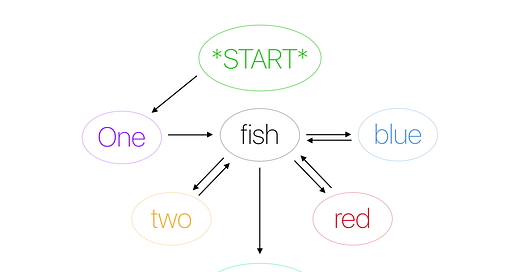Hello!!
Welcome to the new edition of Business Analytics Review!
Today we are delving into fundamental method of Natural Language Generation (NLG) is a significant area within artificial intelligence (AI) that focuses on the automatic creation of human-like text from structured data. This technology transforms data inputs into coherent narratives, facilitating easier communication of information to users.
NLG is the process by which computer systems generate written or spoken narratives that are understandable to humans. It serves as a bridge between raw data and human-readable language, allowing users to interact with complex information more intuitively. The primary goal is to produce text that is logical, contextually relevant, and resembles human speech.
How NLG Works
The NLG process typically involves several key stages:
Data Input: NLG systems begin with structured data from various sources, such as databases or spreadsheets
Content Planning: The system analyzes the input to determine what information should be included in the output
Text Planning: This stage involves organizing the content into a coherent structure and selecting appropriate wording and style
Sentence Generation: Individual sentences are crafted based on the planned content, ensuring grammatical accuracy and natural flow
Refinement: The generated text undergoes a refinement process to enhance clarity, coherence, and overall quality
Recommended Reads on Natural Language Generation
What is Natural Language Generation (NLG)?
Potential of Natural Language Generation (NLG) to transform business operations by enhancing communication and data analysis capabilities
Natural Language Generation (NLG): Everything You Need to Know
An in-depth overview of Natural Language Generation (NLG) and its applications in content marketing
Natural Language Generation (NLG): Key Benefits and Use Cases
A comprehensive overview of Natural Language Generation (NLG) technology for understanding its benefits, applications, and future prospects
Trending in Business Analytics
Let’s catch up on some of the latest happenings in the world of Business Analytics:
China’s Tesla rival Li Auto wants to expand into an AI and robot company
Li Auto, a Chinese electric vehicle manufacturer, sets its ambitions to expand into artificial intelligence (AI) and robotics
Game-Changer for Mobility Data! Arity’s Analytics Revolution Unleashed
Arity, a technology company focused on mobility data analytics, highlighting its potential to significantly improve safety and efficiency in transportation systems
Elon Musk’s xAI Raises $6 Billion in New Funding
xAI, has successfully raised $6 billion in a Series C funding round, significantly boosting its valuation to between $35 billion and $40 billion
Tool of the Day: Anyword
Anyword is an NLG tool that helps businesses create high-performing content efficiently. It offers features like content intelligence, a data-driven editor for optimizing performance, and brand consistency tools. Anyword integrates with popular writing platforms and provides performance analytics to inform marketing strategies. It also specializes in generating engaging email content tailored to customer personas, significantly improving open and click-through rates. Learn More
If you wish to promote your product / services , please visit here
Thank you for being part of our community! We hope you found this edition insightful. If you enjoyed the content, please give us a thumbs up!








So AI operates based on what we have said and done and corrects us based on experience. But isn't there a danger in everyone following the AI guidance, stifling creative language nuances and originality?
In a similar vein to Dimas DeBrito, it is evident there is currently a complete lack of recognition for the vital emotional context of all language.
At the heart of all communication sits two tenets - the transmission of raw data plus its emotional container. This is how the age old adage of, "It's not what you say but how you you say it" arose.
Just like in the ever failing field of customer services, what we do not need is a focus on pure process & procedure, a formulaic approach, that utterly ignores our need to be satisfied with communication not just informed.